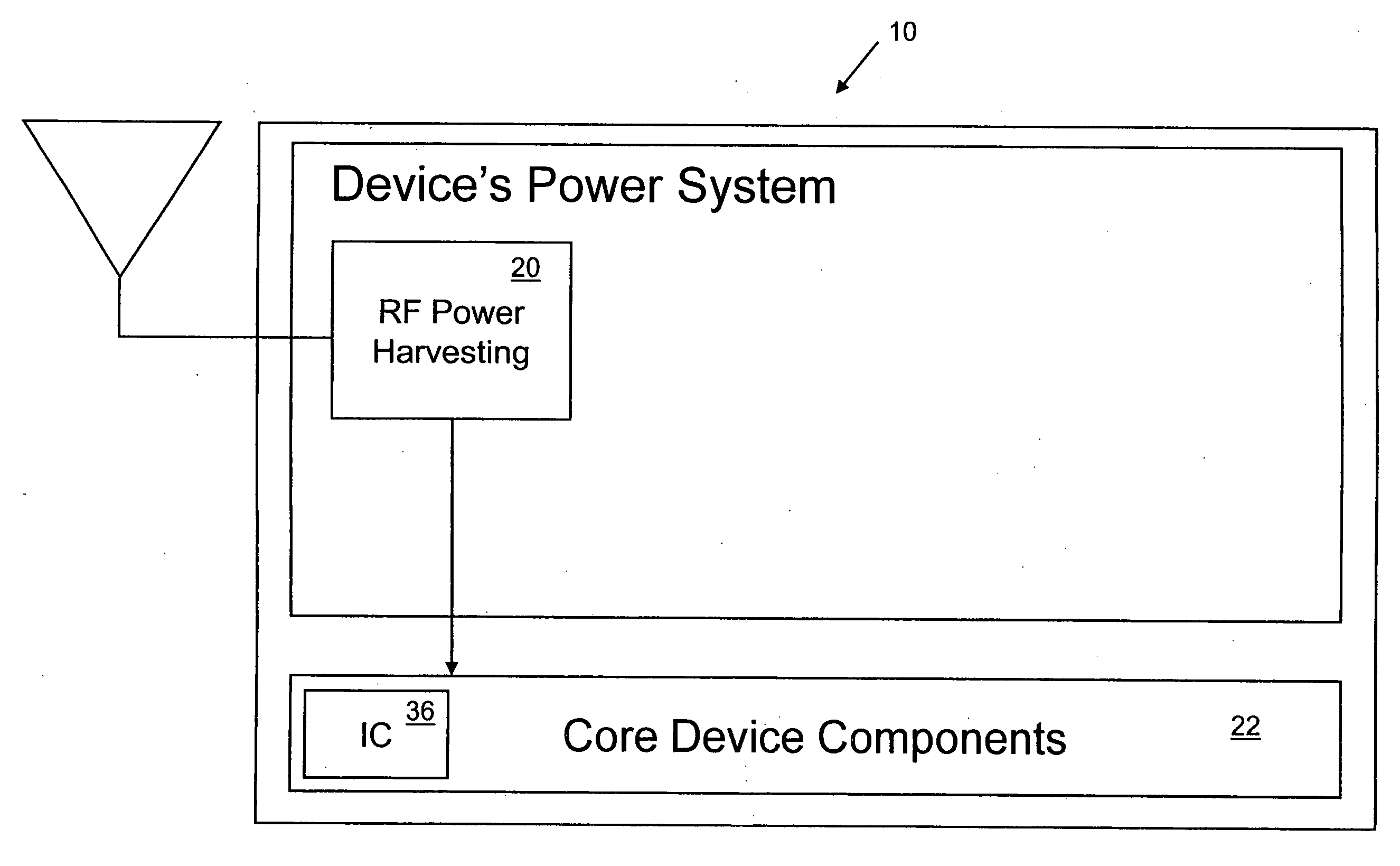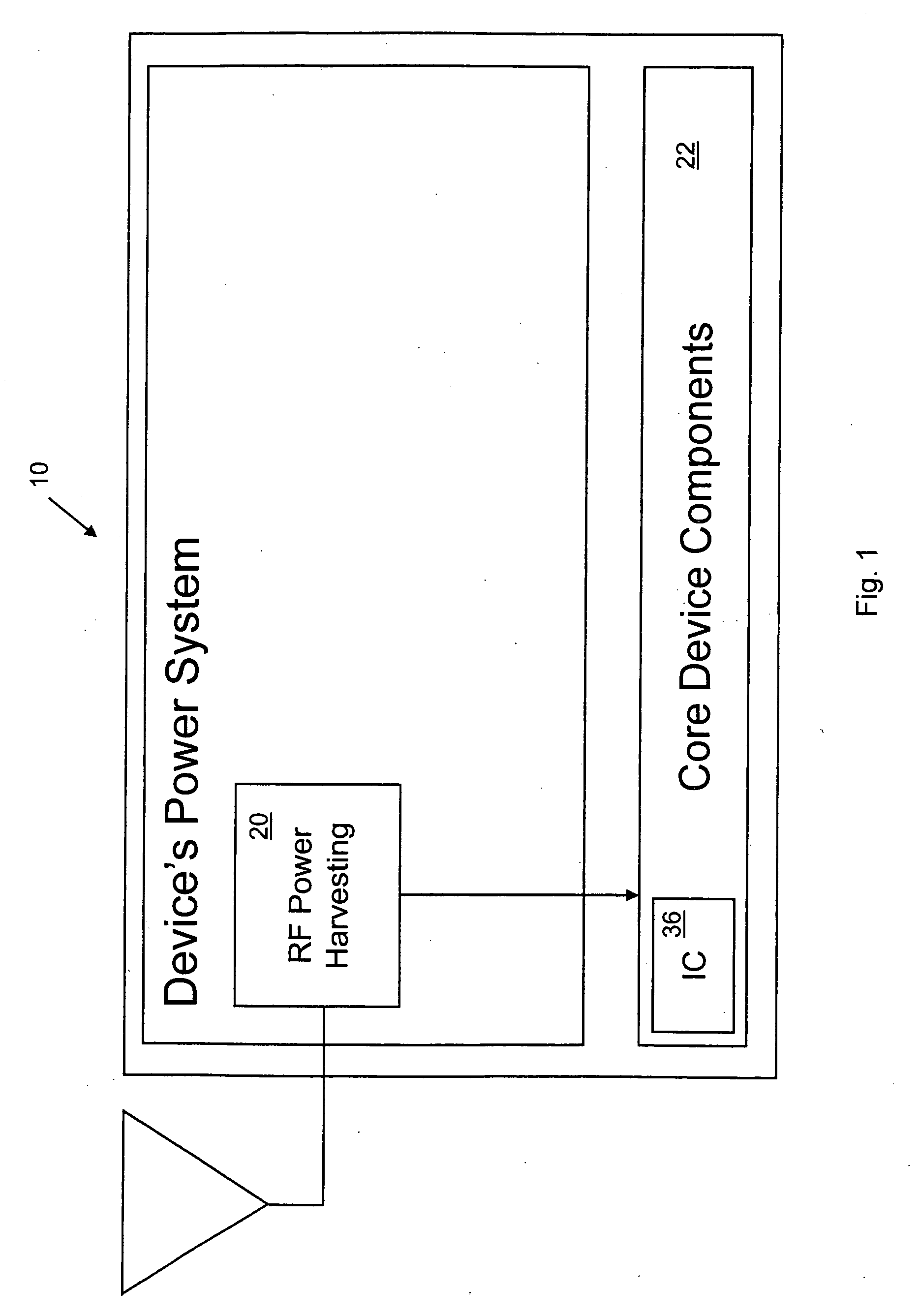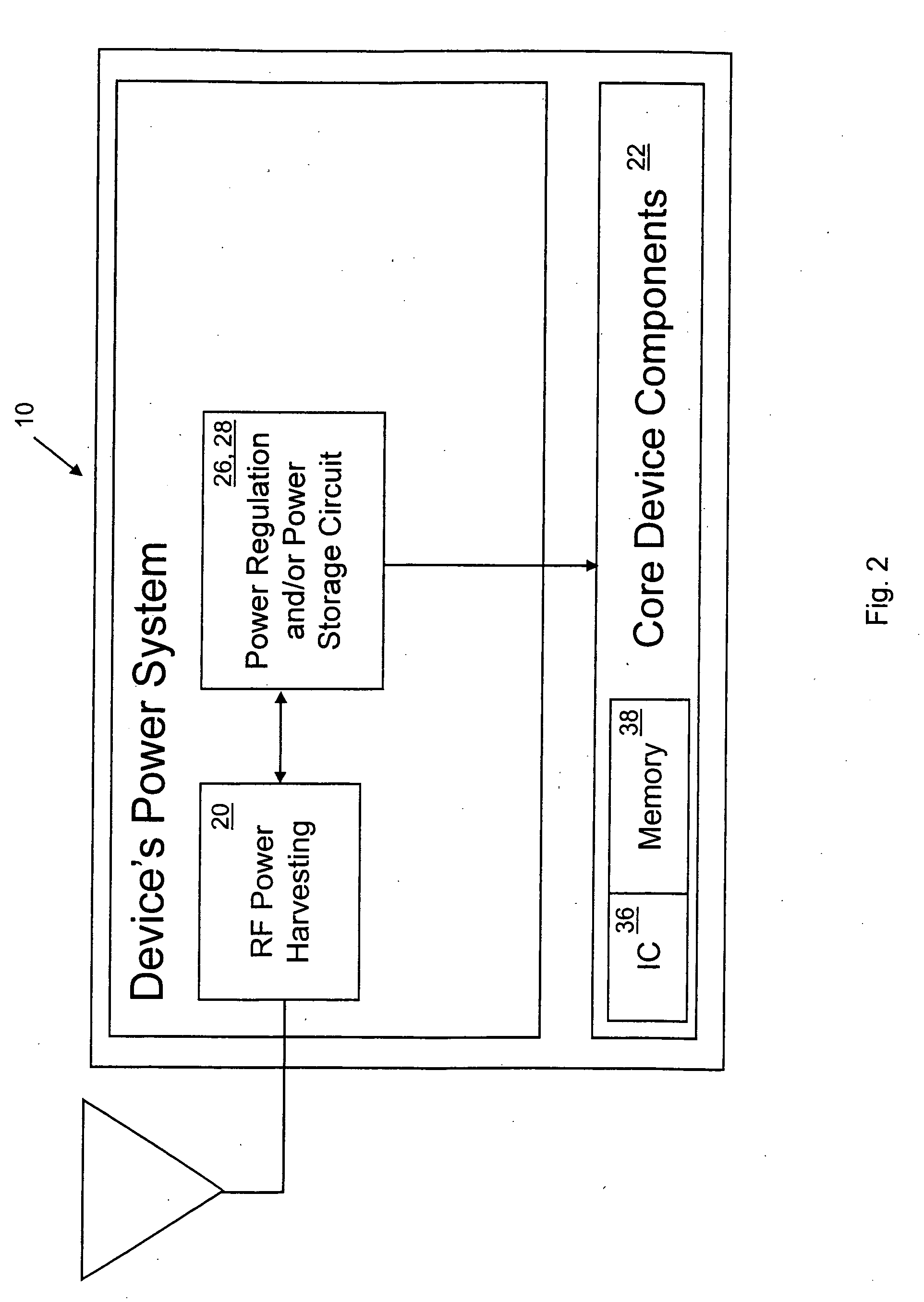Powering cell phones and similar devices using RF energy harvesting
a cell phone and energy harvesting technology, applied in the direction of antenna details, support structure mounting, antennas, etc., can solve the problems of unsatisfactory lifetime cost and maintenance requirements of applications, unscheduled maintenance trips are even more costly and disruptive, and many devices do not provide the lifetime cost and maintenance requirements for applications
- Summary
- Abstract
- Description
- Claims
- Application Information
AI Technical Summary
Benefits of technology
Problems solved by technology
Method used
Image
Examples
Embodiment Construction
[0124]A complete understanding of the invention will be obtained from the following description when taken in connection with the accompanying drawing figures wherein like reference characters identify like parts throughout.
[0125]There is shown an apparatus 10 for an application. The apparatus 10 comprises a core device 22 preferably having an integrated circuit for the application. The apparatus 10 comprises a power harvester 20 connected to the core device 22 to power the core device 22.
[0126]The apparatus 10 preferably includes an alternative power source 24 connected to the core device 22 to power the core device 22 in conjunction with the power harvester 20. Preferably, the apparatus 10 includes a power regulator 26 and / or power storage circuit 28 connected to the power harvester 20. The apparatus 10 preferably includes a power storage charger 30 connected to the power harvester 20. Preferably, the apparatus 10 includes a power storage connected to the power harvester 20.
[0127]...
PUM
 Login to View More
Login to View More Abstract
Description
Claims
Application Information
 Login to View More
Login to View More - R&D
- Intellectual Property
- Life Sciences
- Materials
- Tech Scout
- Unparalleled Data Quality
- Higher Quality Content
- 60% Fewer Hallucinations
Browse by: Latest US Patents, China's latest patents, Technical Efficacy Thesaurus, Application Domain, Technology Topic, Popular Technical Reports.
© 2025 PatSnap. All rights reserved.Legal|Privacy policy|Modern Slavery Act Transparency Statement|Sitemap|About US| Contact US: help@patsnap.com



